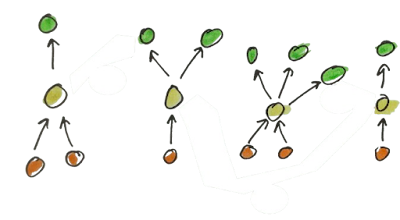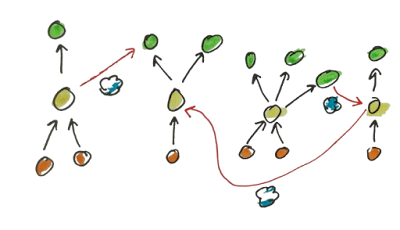"managers continue to dance round and round the campfire - exuding faith and dissipating energy.This "rain dance" is the ardent pursuit of activities that sound good, look good, and allow managers to feel good - but in fact contribute little or nothing to bottom-line performance."
- 2007 - Factos vs Retórica
- 2007 - Mais um monumento à treta - parte II
Nas Grandes Opções do Plano, a palavra decisiva não é “opções”. É plano.
Um plano não é um texto bem-intencionado, nem um catálogo de actividades desejáveis. Um plano é, por definição, um conjunto de escolhas explícitas que ligam prioridades políticas a recursos, no tempo, para produzir resultados verificáveis. Quando essa ligação não existe, o documento pode chamar-se GOP — mas não é um plano. É apenas um enunciado de intenções.
A diferença entre um plano e uma lista é simples e, ao mesmo tempo, exigente. Um plano responde sempre a quatro perguntas elementares:
- O que vamos fazer (e, tão importante quanto isso, o que não vamos fazer);
- Por que — qual o problema concreto que se quer resolver ou a oportunidade que se pretende aproveitar?
- Com que meios — financeiros, humanos e organizativos; e
- Com que resultado esperado — o que muda, de forma observável, na vida da freguesia?
Se uma GOP não permite responder com clareza a estas quatro perguntas, então falta-lhe o essencial: o plano.
Sem inventar nada fora do espírito da lei, um plano mínimo nas GOP deveria começar por prioridades claras. Prioridades reais, não todas iguais, não infinitas. De três a seis, no máximo. E escritas como escolhas, não como desejos vagos. "Requalificação do espaço público existente" é uma prioridade. "Melhorar a qualidade de vida" não é — é uma aspiração genérica que serve para tudo e, por isso, não serve para nada.
A cada prioridade devem corresponder medidas concretas. O que vai ser feito de forma explícita e o que não cabe neste ano ou neste mandato. É aqui que o plano começa verdadeiramente, pois escolher implica excluir (Decidir (em português) vem do latim decidere, que significa literalmente "cortar fora" (de- "fora" + caedere "cortar")). Sem exclusão, não há prioridade; sem prioridade, não há plano.
Depois, a ligação ao Orçamento. Um plano sério permite sempre responder a três perguntas incómodas: quanto dinheiro está afecto a cada prioridade, em que rubrica e em que momento do ano. Quando não há dinheiro associado, não estamos perante um plano — estamos perante uma intenção. E as intenções não se executam, apenas se declaram.
Um plano também precisa de tempo. O que é para fazer este ano, o que é preparação para os anos seguintes, o que é estrutural e contínuo. Um plano sem horizonte temporal transforma-se rapidamente em narrativa política: agradável de ler, impossível de acompanhar.
Finalmente, os resultados esperados. Não basta listar actividades; é preciso dizer o que muda se o plano for bem executado. Metros de passeios requalificados, redução do tempo de resposta a pedidos, aumento do número de utilizadores de um serviço. Não são necessários KPIs sofisticados nem dashboards complexos. Basta que os resultados sejam observáveis e passíveis de escrutínio.
O erro mais comum nas GOP das freguesias é confundir o plano com uma lista de áreas de intervenção. GOP organizadas por “Acção Social”, “Cultura”, “Desporto” ou “Espaço Público”, sem escolhas claras, sem dinheiro identificado, sem tempo definido e sem resultados esperados. Nesses casos, o plano desaparece. Tudo isto é legal. Nada disto é boa prática.
Fica apenas um catálogo do que a Junta gostaria de fazer — e, com ele, uma enorme dificuldade de escrutínio político. Porque onde não há plano, também não há responsabilidade clara. E isso, mais do que um problema técnico, é uma opção política.
Trecho inicial retirado de um fabuloso artigo que li em papel e nunca mais esqueci: "Successful Change Programs Begin with Results" de Robert Schaffer e Harvey Thomson, publicado no número de Janeiro-Fevereiro de 1992.

%2012.44.jpeg)
%2016.41.jpeg)
%2013.30.jpeg)
%2013.35.jpeg)
%2014.04.jpeg)
%2014.16.jpeg)

%2014.50.jpeg)
%2010.02.jpeg)
%2014.57.jpeg)
%2013.49.jpeg)



























%2006.21.jpeg)












